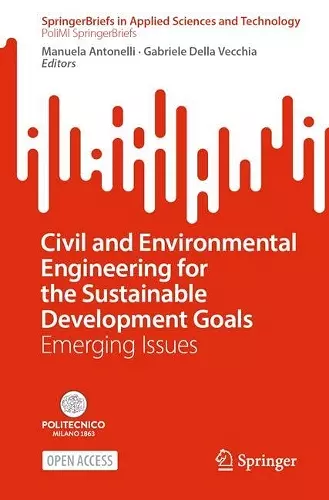Civil and Environmental Engineering for the Sustainable Development Goals
Emerging Issues
Manuela Antonelli editor Gabriele Della Vecchia editor
Format:Paperback
Publisher:Springer Nature Switzerland AG
Published:15th May '22
Currently unavailable, and unfortunately no date known when it will be back

This open access volume collects emerging issues in Environmental and Civil Engineering, originating from outstanding doctoral dissertations discussed at Politecnico di Milano in 2021. The advanced innovative insights provided are presented with reference to the relevant sustainable development goals (SDGs), hoping that scientists, technicians and decision makers will find them as a valid support to face future sustainability challenges.
Indeed, the fast evolution of our society often falls short in properly taking into consideration its relationship with the environment, which is not only the primary source of any resource and the sink of all the wastes we generate throughout our activities, but also the cause of most of the loading and constraints applied to structures and infrastructures. The lack of a proper consideration of the relationship between the needs of both the society and the environment may lead to strong disequilibria, generating a large amount of threats for arobust, resilient and continuous development. In this perspective, the SDGs set by the United Nations represent the criteria to revise our development model, towards the ability to conjugate different needs to build a safe relation between anthropic activities and the environment. Civil and Environmental Engineering plays a relevant role in providing methods, approaches, risk and impact assessments, as well as technologies, to fulfil the SDGs. Research in these fields may in fact provide technical knowledge and tools to support decision makers and technicians in: (i) planning mitigation and adaptation actions to climate change, extreme weather, earthquakes, drought, flooding and other natural disasters; (ii) designing efficient and sustainable strategies for resources exploitation, minimizing the impact and the unequal distributions; (iii) increasing the safety of structures and infrastructures under exceptional loadings and against the deterioration due to their lifecycle; (iv) adopting a holistic risk management approach and appropriate technologies to reduce pollution and environment deterioration, which increase vulnerability; (v) providing a safe drinking water and sanitation system to protect human health.ISBN: 9783030995928
Dimensions: unknown
Weight: unknown
108 pages
1st ed. 2022